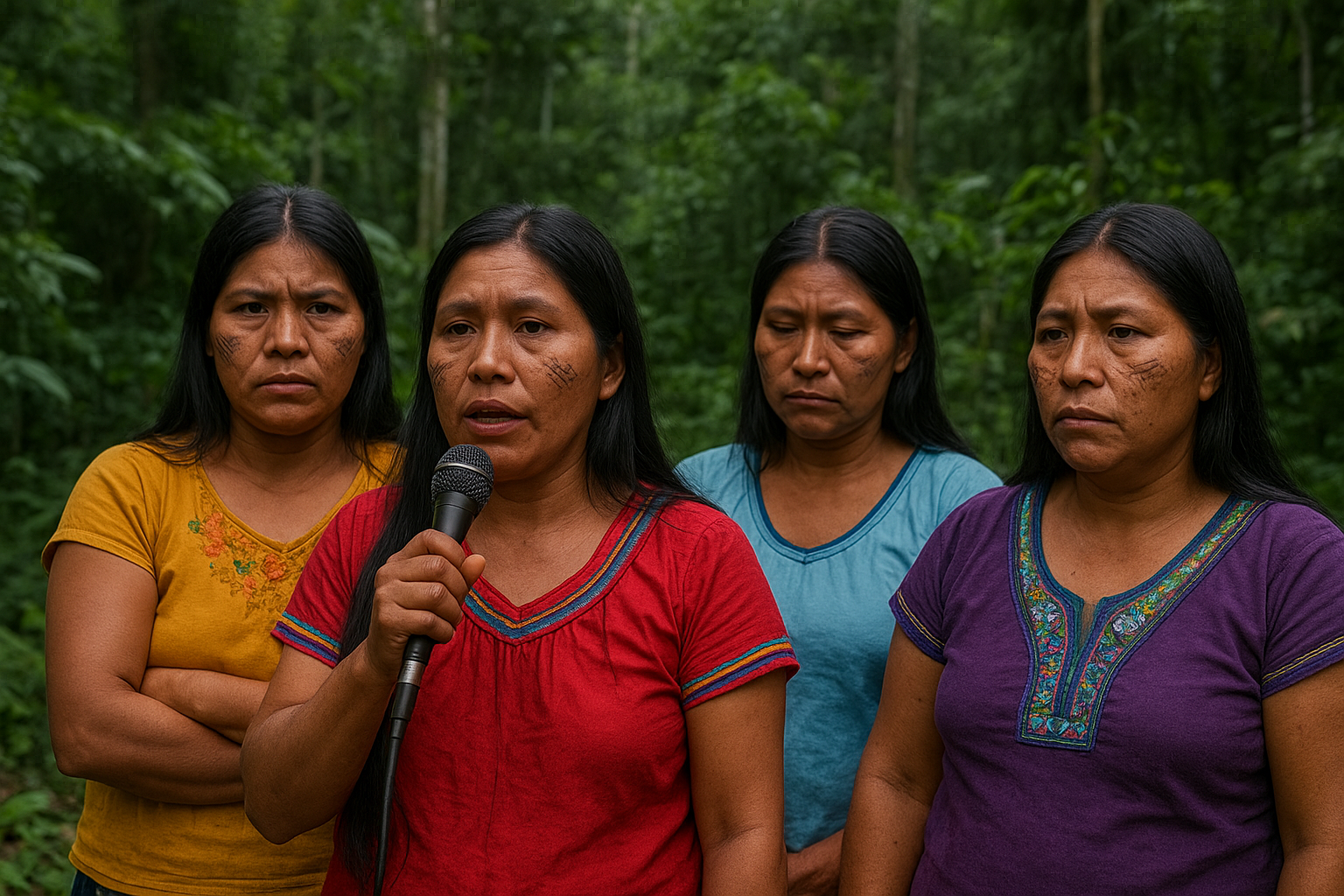Explore Issues
- Arts and Culture
- Decolonizing Thought
- Environmental Justice
- Health
- Languages and Education
- Science
- Social and Gender Justice
- Uncategorized
Filter by Country
-

Women of the Rainforest: Voices Against Violence
In the heart of the Ecuadorian Amazon, where the rainforest is our mother and refuge, indigenous women sustain life, memory, and resistance. They are the guardians of our territories, of traditional medicine, and of the word. That resistance, however, faces silent and brutal violence every day; a violence interwoven with patriarchy, structural discrimination, and neglect…
-

Women of the Rainforest: Voices Against Violence
In the heart of the Ecuadorian Amazon, where the rainforest is our mother and refuge, indigenous women sustain life, memory, and resistance. They are the guardians of our territories, of traditional medicine, and of the word. That resistance, however, faces silent and brutal violence every day; a violence interwoven with patriarchy, structural discrimination, and neglect…
-

Ecuador: The State Should Buy Food Supplies Directly From Campesinos
“Due to the health emergency that we are experiencing, the State must take measures to suspend the payment of credits, not only for agricultural activity but for all economic activities in Ecuador,” Leónidas Iza, here during a conversation in Loja. (Diego Vaca / MICC Communication) FROM THE EDITORS: In the face of the pandemic, indigenous…
-

COVID-19 Questions Our Civilization Model
SOURCE: Bajo el Mismo Sol, Radio Nacional Córdoba, Argentina. Interview with Horacio Machado Aráoz, PhD in human sciences, Conicet researcher with the Ecología Política del Sur team. Transcript translated into English by Awasqa. HORACIO: It is a pleasant surprise for you to call me on this topic. FABIANA: Did you expect me to invite a…
-

Decolonizing Health II: Community Efforts in Abya Yala
Slowly we perceive―like the rising of the river when it comes down from the mountain―that the rain at the top of the summit hasn’t ceded, and that we must prepare for the sudden flow. After the initial storm, like the soft roots that creep between the stones until they are broken, ideas, actions, and the…
-

Decolonizing Health: How Native Communities Are Ramping Up COVID-19 Preparedness
Native American communities in several territories are rapidly stepping up efforts to prepare for the COVID-19 pandemic emergency. Their work is exemplary of how, despite the greater vulnerability of remote communities as well as health disparities inherited from centuries of colonial abuses, Native peoples are using every tool available to build stronger communities and help…
-

VIII Continental Congress of Indigenous Women of the Americas
More than 250 women representatives of indigenous organizations from across the Americas met in Mexico City to discuss the current political and social situation of the Americas that affects indigenous women, children and youth. Within the framework of the fight against violence against women and feminicide, the participants met from February 26 to 29 to…
-

Wet’suwet’en’s Rule of Law Precedes Colonialism
Indigenous law exists. The courts have recognized it. The Wet’suwet’en are following it. By Paige Raibmon.* Originally Posted by The Tyee. “One-way streets.” That is how Harold Cardinal, the great Cree politician, activist writer, and teacher, characterized 100 years of “talking and listening” between Indigenous and non-Indigenous people in Canada. Yes, there had been a…
-

Indian Was the Name Used to Subjugate Us, Indian Is the Name by Which We Will Be Liberated
FROM THE EDITORS: During the October 2019 protests in Ecuador led by indigenous groups and social justice organizations, politicians made openly racist statements, replicated by the media and promoted by social networks, that deeply polarized the country. Below we share a clear response to racist comments made on a popular podcast, raising calls for inquiries…
-

Brazil: Manifest for Life of 45 Tribes in Piaraçu
FROM THE EDITORS: As many as 600 indigenous people representing 45 different tribes met in the Amazon to strengthen their ties under the Alliance of the Peoples of the Forest, and push forward a strategy of resistance against the Brazilian government’s land-grabbing policies that favor large meat factory farms, extractivist industries, and monocultures. The Alliance’s…